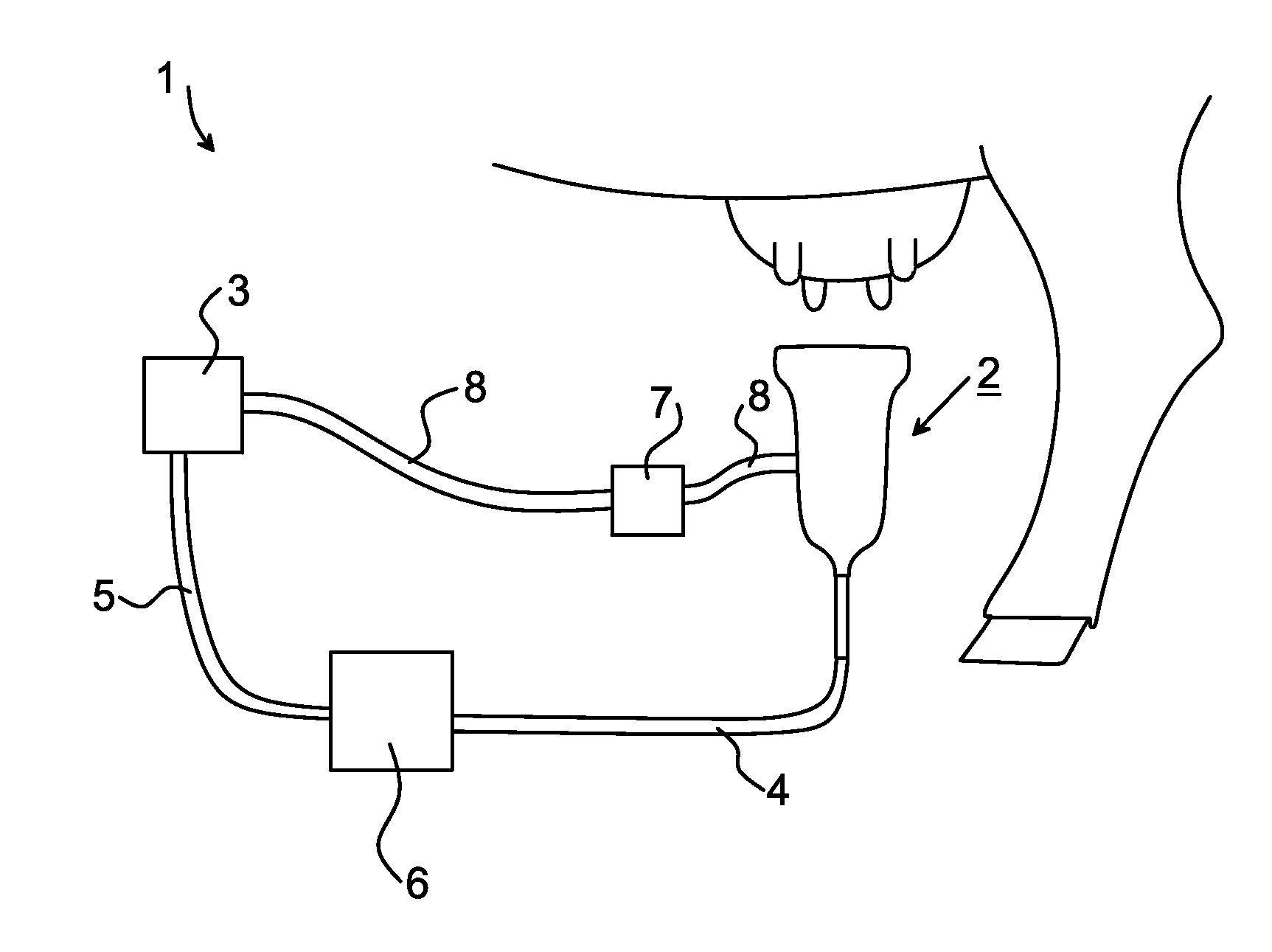Milking system, a teat cup and a teat cup liner
a technology of teat cup and teat cup, which is applied in the field of milking, can solve the problems of too many teat cups, too many time-consuming and inefficient solutions, and the inability to mimic the lifelike extraction of milk by a calf, and achieve the effect of less service and maintenance work and fewer components
- Summary
- Abstract
- Description
- Claims
- Application Information
AI Technical Summary
Benefits of technology
Problems solved by technology
Method used
Image
Examples
first embodiment
[0034]FIG. 3 illustrates the teat cup liner 111 in accordance with the invention. The shape of the teat cup liner 111 is similar to a conventional teat cup liner, i.e. it comprises attachment means 17, 18 (schematically shown) for mounting to the teat cup shell 10 at the upper end, and at the lower end, respectively. The connection means 17, 18 should be designed so as to enable the closed space 16 to be formed. The teat cup liner 111 may also comprise connection means for connection to a milk line.
[0035]When the teat cup 2 is to be attached to the teat, a vacuum is supplied at the first connection point P1. The teat cup liner 111 is thereby expanded so that the attachment is accomplished. The lower, rounded part of the teat, i.e. the teat tip, is subjected to the vacuum level supplied at the second connection point P2.
[0036]The diameter of the teat cup liner 111 is chosen so that it, in its relaxed state, i.e. non-contracted and non-expanded state, is smaller than the outer diamete...
third embodiment
[0046]FIG. 5 illustrates the teat cup liner 113. The teat cup liner 113 comprises a conical shape having an upper part that is broader than a lower part. By means of the conical shape the upper part of the teat cup liner 113 bears free from the teat throughout a whole milking session. Further, the lower part of the teat cup liner 113 supports the teat and fits tight only at the lower part of the teat, thereby subjecting only the lower, rounded part of the teat to the vacuum level provided by the vacuum supply source 3.
[0047]The conical shape and in particular the angle between a vertical line and the wall of the teat cup liner 113, i.e. the difference in diameter of the upper part and diameter of the lower part, can be chosen so as to fit all sizes of teats of the milking animals of a herd. The teat cup liner 113 having a certain angle then comes in supporting contact with the teat and fits tight at different heights along the teat, depending on teat size.
[0048]In this embodiment of...
PUM
 Login to View More
Login to View More Abstract
Description
Claims
Application Information
 Login to View More
Login to View More - R&D
- Intellectual Property
- Life Sciences
- Materials
- Tech Scout
- Unparalleled Data Quality
- Higher Quality Content
- 60% Fewer Hallucinations
Browse by: Latest US Patents, China's latest patents, Technical Efficacy Thesaurus, Application Domain, Technology Topic, Popular Technical Reports.
© 2025 PatSnap. All rights reserved.Legal|Privacy policy|Modern Slavery Act Transparency Statement|Sitemap|About US| Contact US: help@patsnap.com



